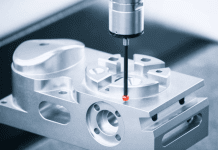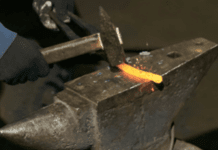The world of manufacturing is a complex and fascinating one, with various industries relying on precision and expertise to turn raw materials into finished products. One crucial step in this process is forging, a method that has been used for centuries to create robust and durable components. In this article, we will delve into the journey from raw material to forged product, exploring the essential role forging companies play in this process.
Understanding Forging
Forging is a manufacturing process that involves shaping a piece of metal, typically at elevated temperatures, into a desired shape and size through the application of force. This method offers numerous advantages, including increased strength, enhanced mechanical properties, and improved structural integrity. To fully grasp the journey from raw material to forged product, it’s essential to understand the key steps involved in the forging process.
Step 1: Raw Material Selection
Every forged product begins with the selection of the appropriate raw material. Forging companies carefully choose materials such as aluminum alloys, carbon steel, stainless steel, and more based on the product’s intended application and requirements. The quality and composition of the raw material significantly impact the final product’s performance and durability.
Step 2: Design and Planning
Once the raw material is chosen, the next step involves product design and planning. Experienced engineers and designers use software like CAD/CAE to develop precise blueprints that guide the forging process. This stage ensures that the final product meets the desired specifications and tolerances.
Step 3: Die Design and Manufacturing
Forging requires specialized tools called dies. These dies are designed to shape the raw material into the desired form. Forging companies invest in die design and manufacturing capabilities to create custom molds that align with the product design. These dies play a crucial role in determining the accuracy and quality of the forged components.
Step 4: Hot Die Forging
One of the primary methods used by forging companies is hot die forging. In this process, the selected raw material is heated to high temperatures and placed between the dies. Enormous presses apply force to shape the material into the desired configuration. Hot die forging is particularly effective for creating components with superior strength and durability.
Step 5: Cold Forging and Warm Extrusion
In addition to hot die forging, some products require cold forging or warm extrusion. These processes involve shaping the material at lower temperatures to achieve precision and accuracy. Cold forging is ideal for products where small deformations and high precision are essential.
Step 6: Precision Machining
Once the forging process is complete, the components may undergo precision machining. This involves the use of advanced equipment such as lathes, milling machines, and CNC machines to refine the forged parts further. Precision machining ensures that the final product meets the tight tolerances specified in the design.
Step 7: Quality Control
Quality control is a critical aspect of the journey from raw material to forged product. Forging companies employ rigorous testing and inspection procedures to ensure that every component meets the highest standards of quality and performance. This includes dimensional checks, material composition analysis, and mechanical property testing.
Conclusion
The journey from raw material to forged product is a meticulous and precise process that relies on the expertise of forging companies. Each step, from raw material selection to quality control, plays a crucial role in delivering components that are not only strong and durable but also meet the specific requirements of various industries. As technology advances and manufacturing techniques evolve, forging remains a timeless method for creating reliable and robust components that drive innovation and progress across numerous sectors.










